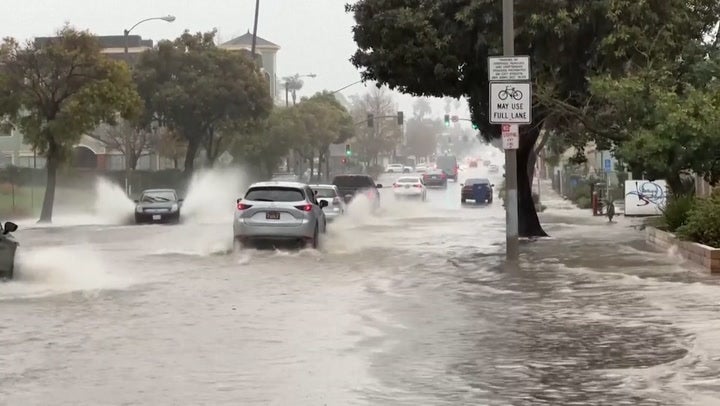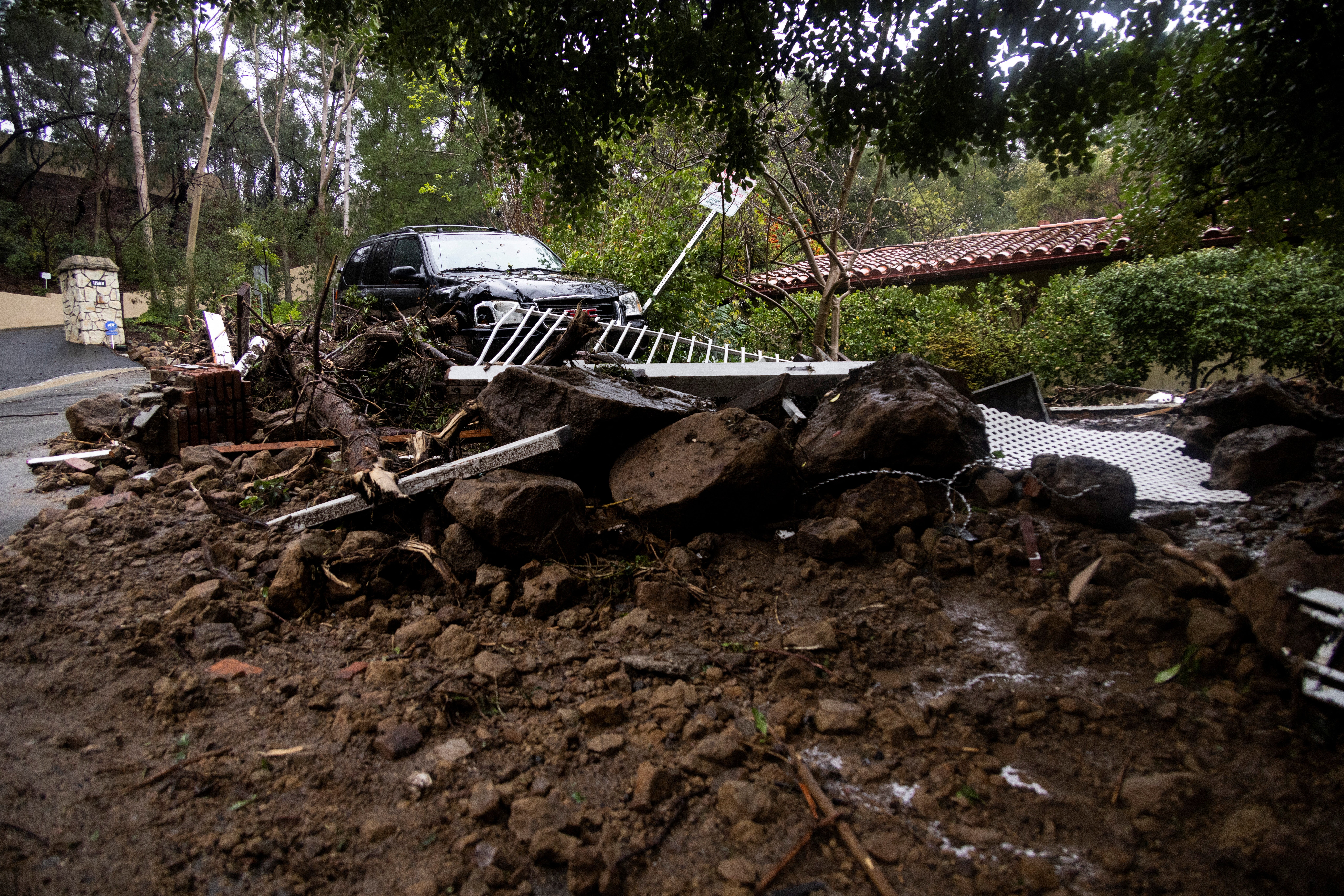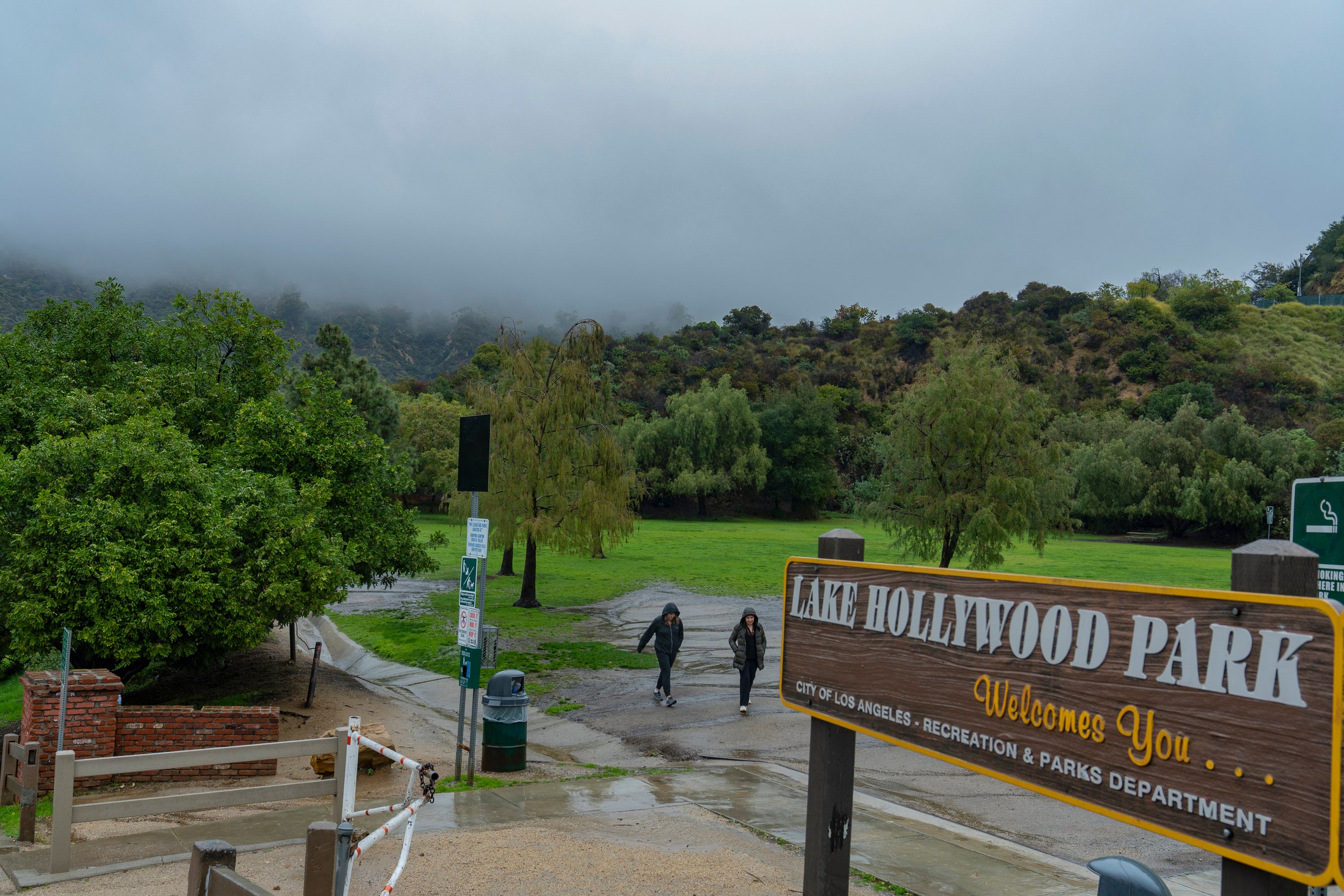At least three killed as historic storm sweeps California leaving up to $11bn trail of damage
The extreme weather and record rainfall turned hillsides into cascading mudflows, leaving many displaced and hundreds of thousands without power
At least three people have died in California as the second of two atmospheric river storms blasted the state, leaving a trail of destruction estimated to be worth up to $11bn.
The extreme weather and record rainfall turned hillsides into cascading mudflows, leaving many displaced and hundreds of thousands without power.
California Governor Gavin Newsom declared a state of emergency in eight counties in Southern California, affecting around 20 million people.
Major cities including Los Angeles and San Francisco experienced unprecedented levels of rain, and gusts that forced the National Weather Service (NWS) to issue a rare hurricane warning in the north of the state.
Los Angeles residents were sent warnings for flash floods which advised people not to travel unless evacuating or “fleeing the area” due to a “dangerous and life-threatening” situation.
Downtown LA, where stars had gathered for the Grammy Awards, saw 4.1 inches of rain on Sunday, smashing its previous record of 2.55 inches recorded back in 1927.

Elsewhere, popular tourist destinations including Venice Beach in LA, and Disneyland in Anaheim were left devoid of punters. Disneyland Park and Disney California Adventure Park closed early two days in a row, officials said, due to ongoing concerns about public safety.
Authorities also confirmed that at least three people were killed on Sunday due to falling trees in various parts of the state.
Chad Ensey, 41, of Carmichael, Sacramento County, and David Gomes, 82, of Yuba City, in Sutter County, both died following incidents at their homes. Elsewhere, in Boulder Creek, a tree also fell onto a home killing one of the residents inside.
Preliminary estimates suggest that the total damage and economic loss in California from the intense storms and record rainfall could be between $9bn and $11bn.
Forecaster AccuWeather’s preliminary estimate largely accounts for damage to homes, businesses, infrastructure, facilities, roadways, and vehicles from both rain and snow, as well as over 900,000 reported power outages at the height of the storm.
By midday on Monday, San Francisco Mayor London Breed announced that the worst of the storm had passed through the city, but said that city workers were still out assessing the damage.
“I’m grateful for their work to take care of our residents and keep the city safe,” she wrote on X.
All evacuation orders in Santa Barbara County were cancelled at 12pm on Monday, though officials warned that some roads and trails may still be inaccessible or closed throughout the county due to storm impacts.
The public was advised that ground saturation may cause continued rock falls, minor debris flows and landslides, and tree falls despite an ease in the rain.
Elsewhere in Ventura County, evacuation orders were downgraded to warnings. Access to the area remained limited due to storm damage.
However, LA Mayor Karen Bass urged Angelinos to continue to stay home on Monday afternoon. “Even when the rains die down, there’s still possibilities of significant damage,” she said during a tour of damage in the Studio City area.
“And we want people to, one, stay inside. This crisis is not over with yet.”

Since the outbreak of the storms, the Los Angeles Fire Department (LAFD) has reportedly responded to over 130 flooding incidents and 49 mud and debris flows, including in the affluent Beverly Hills area of the city.
Teams have also extinguished half a dozen structure fires, conducted several water rescues for stranded motorists, and responded to over 65 traffic collisions, according to LAFD Chief Kristin M Crowley.
The LAFD also reported that an “extensive” river search by ground and air had taken place on Monday morning, following reports of a six-year-old boy in need, but that no victim had been located.
The incident was reported in Arleta, a neighbourhood in the San Fernando Valley region of the city.
Echoing Mayor Bass, Chief Crowley said on Monday that “the hazards of this storm have not passed” and said the city was anticipating “another wave of heavy rain.”
The destruction comes as researchers suggested that, due to ongoing climate change, some tropical storms may now qualify for a hypothetical classification of “category 6”.

The study, published on Monday in Proceedings of the National Academy of Sciences (PNAS), found that the Saffir-Simpson scale, which measures a hurricane’s wind speeds, doesn’t adequately address the hazards associated with extreme storms.
The hurricane scale currently runs from 1 to 5, and was created in the early 1970s. Category 5 hurricanes having wind speeds of 156 mph or stronger — enough to produce “catastrophic” damage.
“We find that a number of recent storms have already achieved this hypothetical category 6 intensity and based on multiple independent lines of evidence examining the highest simulated and potential peak wind speeds, more such storms are projected as the climate continues to warm,” an article in PNAS read.
Michael Wehner, lead author of the latest research, told CBS News that there have been several hurricanes in recent years with winds that far surpass 156 mph — and that it may warrant an entirely new category – “category 6.”
Mr Wehner told the broadcaster that expanding the classification system would aim to better help inform the public of the risks of such serious weather events.
Join our commenting forum
Join thought-provoking conversations, follow other Independent readers and see their replies
Comments